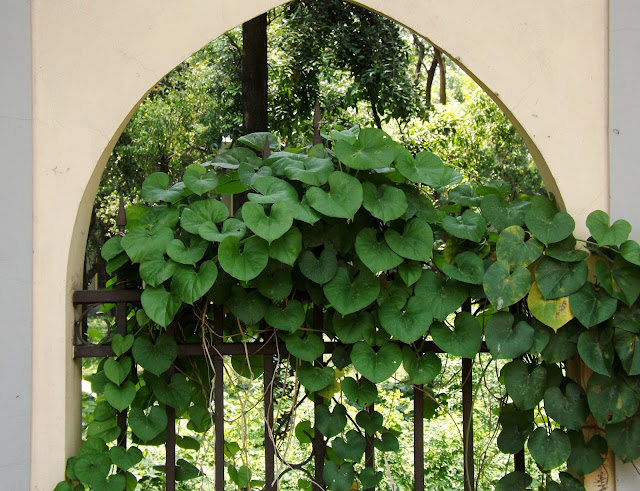Batilota or Climbing aroid, Pothos scandens
Batilota or Climbing aroid (Pothos scandens, family: Araceae) is a long-stemmed and semi-woody climber with peculiar leaves, cylindric branches, attaining a height of 10-15 m. Actually it is an epiphytic climber. It climbs to the top holding the sheltering plant with the help of roots arising from the internodes of its body. The leafy plant is usually found creeping on trees in the North-eastern region as well as Chattogram and Chattogram Hill Tracts in Bangladesh. Outside the country, it is found in the tropical and subtropical Asia and Africa.
Other names: Hatilota, Sunat.
It is a beautiful leafy climber. Although the leaf-blade may look like lobed, it is actually it's petiole! Leaves are light or dark green, shiny, coriaceous, lanceolate, ovate or elliptic with p, 3-8 cm long and 1-1.5 cm wide with pointed or rounded apex. The strange-looking petiole is winged and broad, 3-12 cm long, 1-2 cm wide.
Spadix is round or ovoid, yellowish, axillary, .5 cm long; spathe tiny, peduncle slender. Fruit is a berry, oblong and 1-1.5 cm long, reddish when ripe. Flowering and fruiting occur round the year.
The different parts of the root-climbing plant is used in asthma, bone fracture, meningitis, migraine headache, vertigo and vessel injury. Leaves are used in convulsions and epilepsy, roots are in abscesses. By the by, you can easily enhance the beauty of your garden by placing this beautiful plant on old tree.
Synonyms: Batis hermaphrodita Blanco, Podospadix angustifolia, Pothos angustifolius, Pothos chapelieri, Pothos cognatus, Pothos decipiens, Pothos exiguiflorus, Pothos fallax, Pothos hermaphroditus, Pothos horsfieldii, Pothos leptospadix, Pothos longifolius, Pothos microphyllus, Pothos zollingeri, Pothos zollingerianus, Tapanava indica, Tapanava rheedei.





Comments
Post a Comment